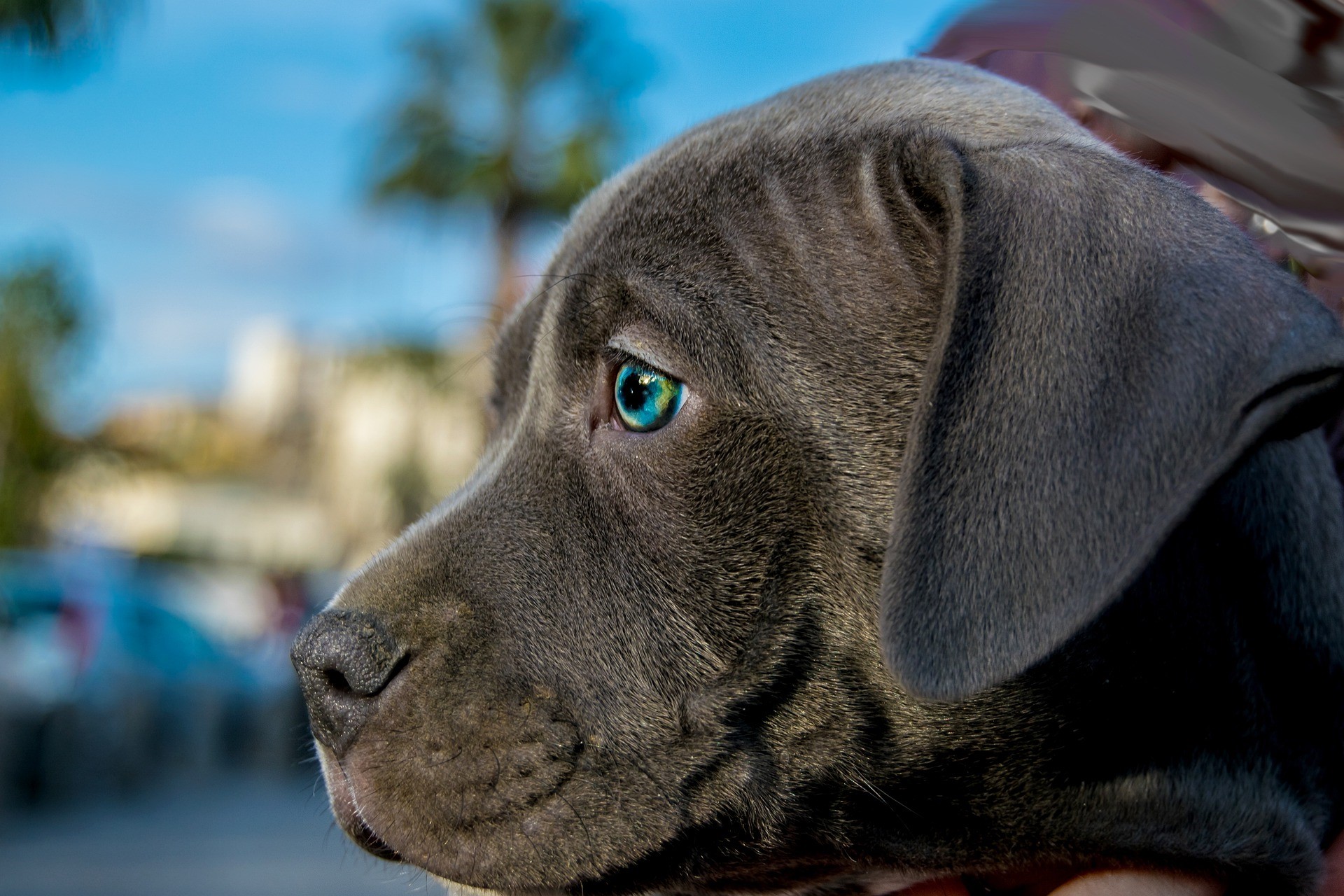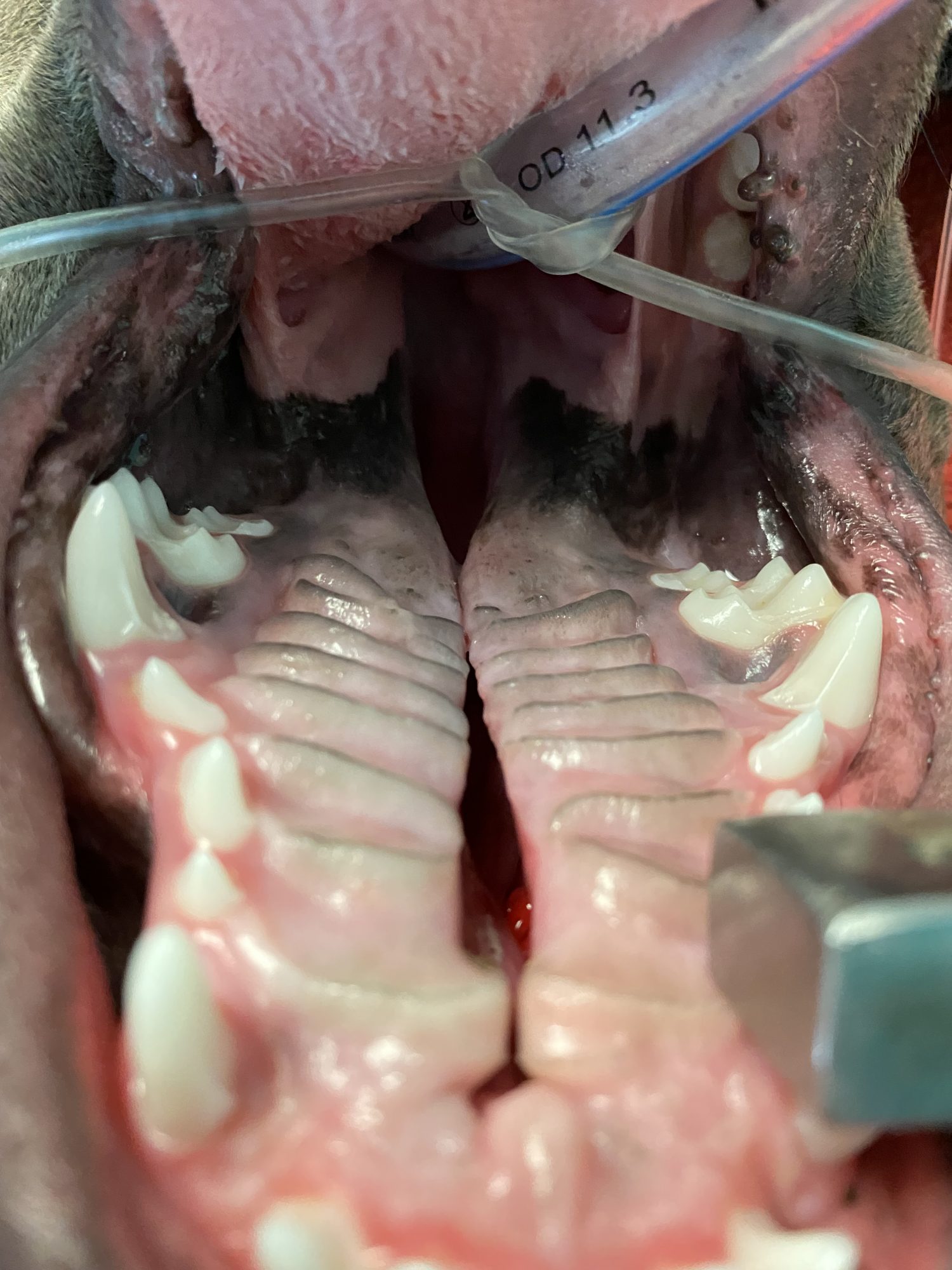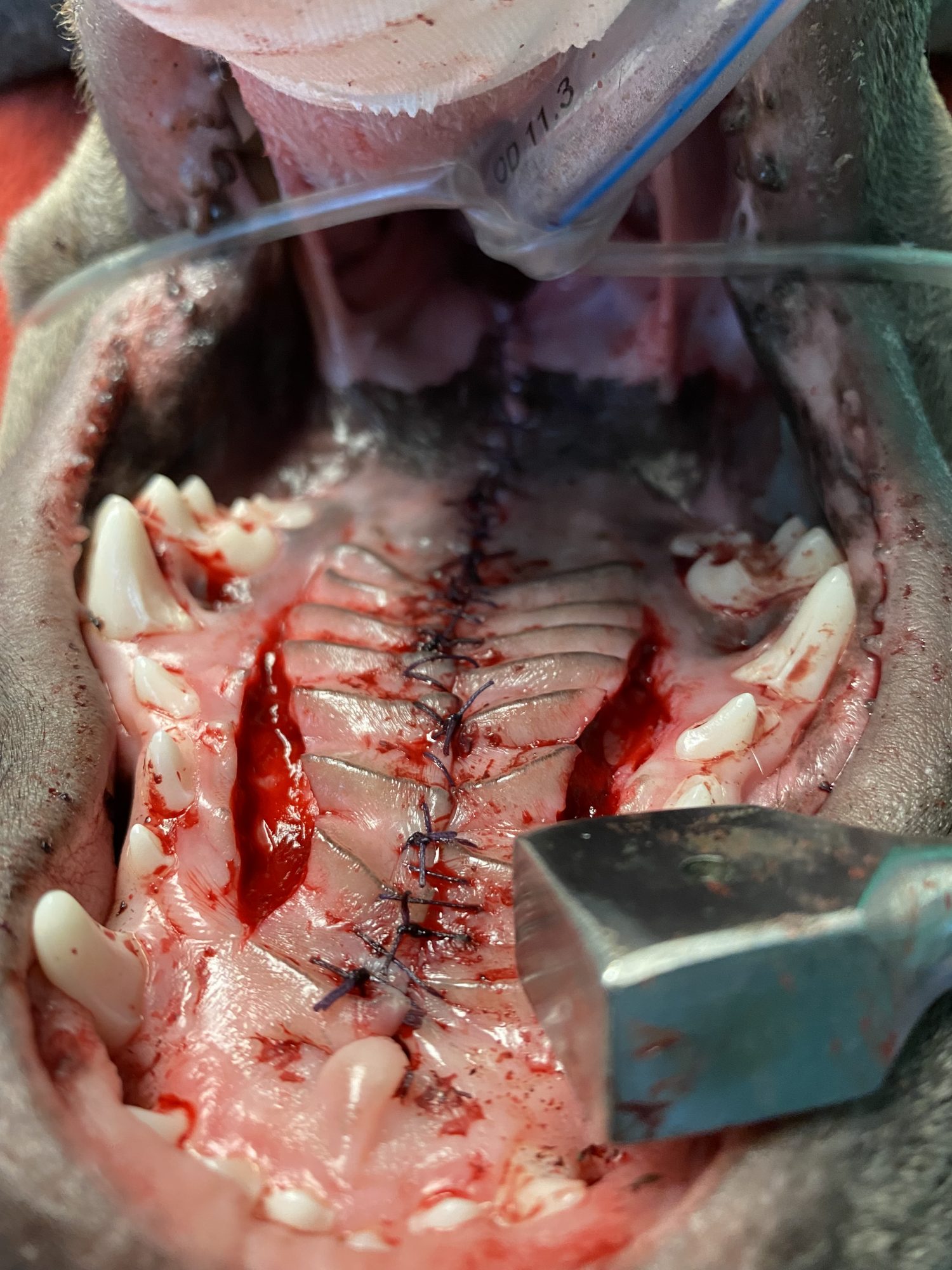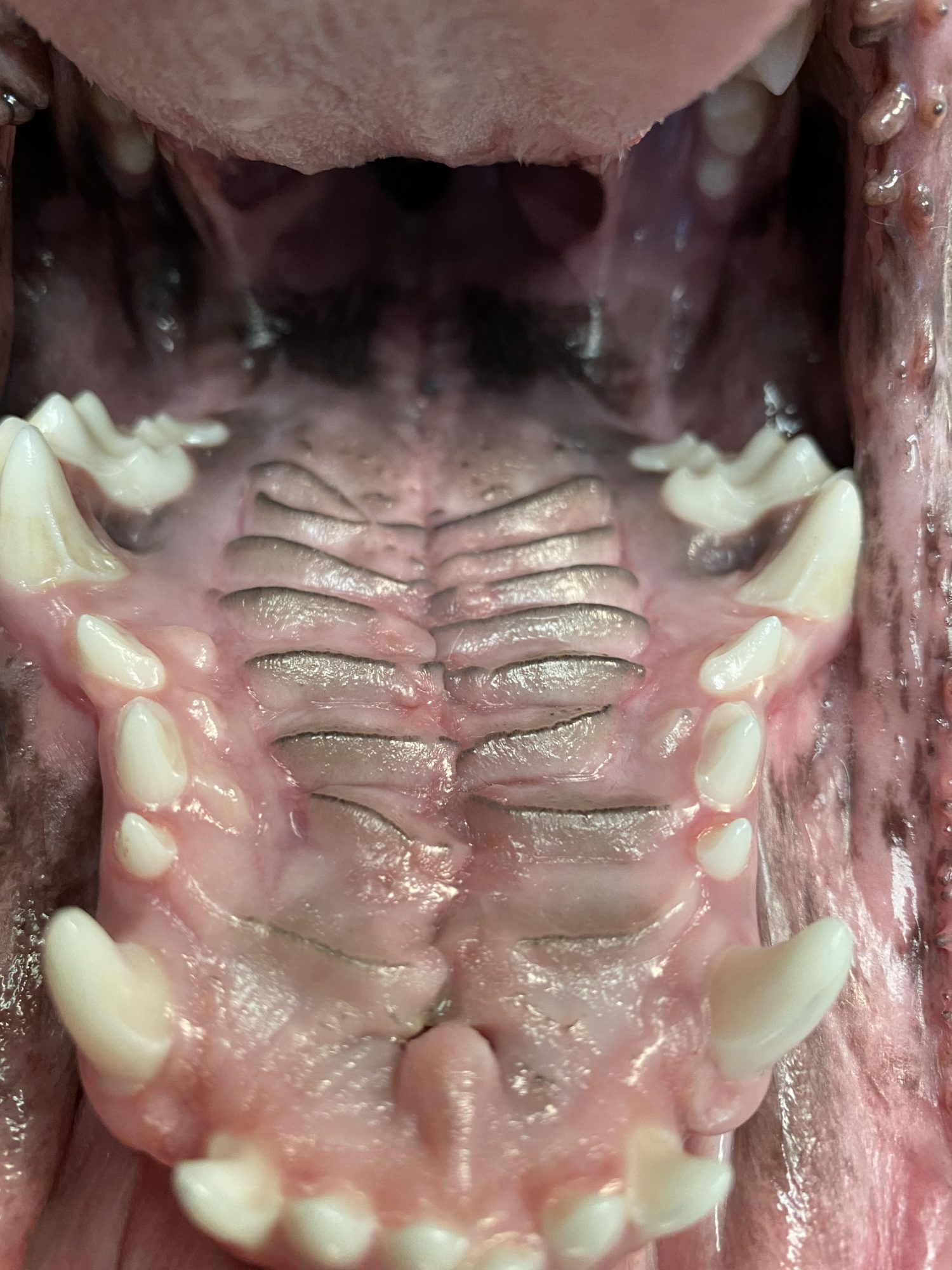Dr. Phil Zeltzman’s Blog
Extreme makeover: Novakai and the cleft palate

“You should be prepared for this puppy to die.”
This is the terrifying advice Novakai’s owner was given.
Novakai, a cute 7 month old Pitbull, did have a big problem in her mouth.
A cleft palate divided the entire roof of her mouth in two halves.
This gap allowed food to go from her mouth into her nose.
PICTURES BELOW ARE GRAPHIC AND ARE NOT FOR THE FAINT OF HEART.
All of the pictures below show the inside of the roof of the mouth, with Novakai on her back.

Puppies with a cleft palate cannot nurse properly, so they don’t grow as much as the rest of the litter. They are typically the “runt.”
Those who survive eventually can have discomfort, a reluctance to eat and drink, difficulty breathing, and ongoing infections. After all, the nose is not supposed to be full of milk or food…
His amazingly dedicated owner wrote: “Novakai was tube-fed until she was about 5 months old. At that time, small amounts of soft kibble were offered. Sadly, most of it would come back out of her nose. So she stayed on a pureed diet until she turned 7 months.”
The only good solution is surgery to reconstruct the hard and the soft palate.
The hard palate is the front portion of the roof of the mouth. It’s hard because there is bone behind it.
The soft palate is the back part of the roof of the mouth. It’s soft because there is no bone behind it.
Suturing one side of the defect to the other does not work. It is doomed to fail. The tissue is just too tight. So one solution is to rob (tissue) from Peter to give to Paul.
PICTURES BELOW ARE GRAPHIC AND ARE NOT FOR THE FAINT OF HEART.

After creating incisions in the hard palate, we created 2 “flaps” or bands of tissue. Then it became easier to stitch one to the other, in the middle of the roof of the mouth.
This left an area on each side where the bone is literally exposed.
Amazingly, those healthy areas progressively heal with new tissue.
Novakai recovered smoothly after anesthesia and surgery, and went home.
She had to stay quiet for one month, without any chew toys or hard food to protect the stitches and the surgery area.
Thankfully, the mouth has an amazing ability to heal. Think of when you bite your tongue or the inside of your cheek. It hurts at first, but then it heals within days.
Novakai needed a bit longer than that, but the end result was rather impressive as you can see below.
One month after surgery, we examined her mouth under sedation to assess the surgery site.

Thankfully, 100% of the surgery area had healed nicely.
Novakai’s owner concludes: “Today she is healthy, happy and very active. The surgery was a great success. She weighs in at a nice 60 lb. We are very pleased with the surgery. We knew the risk was 50-50. My family and I are all very happy that she turned out as well as she did.”
If you would like to learn how we can help your pet with safe surgery and anesthesia, please contact us through www.DrPhilZeltzman.com
Phil Zeltzman, DVM, DACVS, CVJ, Fear Free Certified

Dr. Phil Zeltzman is a traveling veterinary surgeon in Pennsylvania & New Jersey. An award-winning author, he loves to share his adventures in practice along with information about vet medicine and surgery that can really help your pets. Dr. Zeltzman specializes in orthopedic, neurologic, cancer, and soft tissue surgeries for dogs, cats, and small exotics. By working with local family vets, he offers the best surgical care, safest anesthesia, and utmost pain management to all his patients. Sign up to get an email when he updates his blog, and follow him on Facebook, too!

